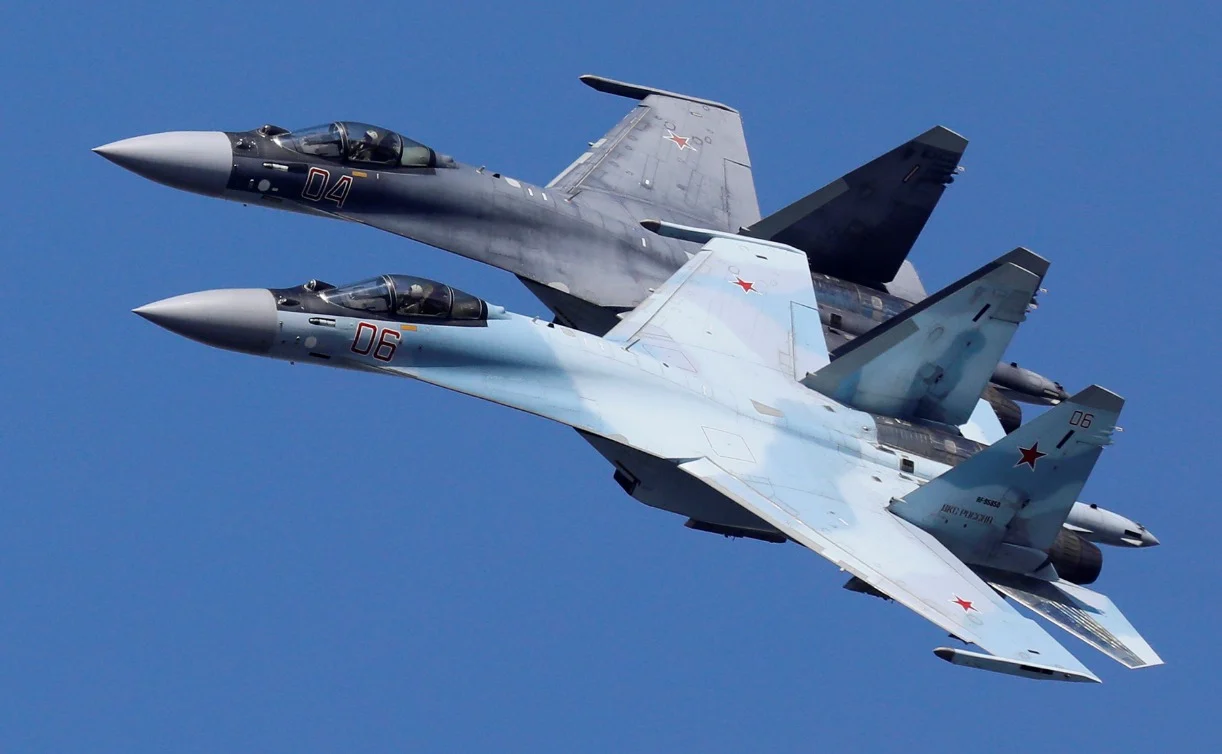
The last three were delivered to the Russian Aerospace Forces (RuAF) recently as part of a five-year contract for 50 such aircraft, the Russian Ministry of Defence announced today.
“Specialists of the 485th military office of the Russian Defense Ministry accepted three Su-35S multirole fighter jets of the 4++ generation. The planes have been redeployed from the plant in Komsomolsk-on-Amur to bases of the Russian Aerospace Forces,” the ministry said on its website.
The next order for the Su-35 jets, expected to be signed by this year end, could see important upgrades to the aircraft including engine, radar and electronics.
Russian Defense Minister Sergei Shoigu announced in August 2020 that the RuAF will sign a new contract worth 70 billion rubles ($927 million) for the supply of an additional batch of Su-35 fighter jets. “By the end of the year, we plan to conclude an additional state contract for the supply of multifunctional Su-35S aircraft. The contract will amount to 70 billion rubles,” Shoigu said in Komsomolsk-on-Amur at a meeting with representatives of the Sukhoi plant which manufactures the Su-35 and Su-57 jets.
The need to upgrade the Su-35 arises from the development of the Su-30SM2 aircraft. The modernized version of the Su-30SM will be shoe-horned with the AL-41-1S engine from the Su-35 as well as its IRBIS-E radar. The Su-30SM2 upgrade is expected to be a good candidate for Su-30 customers such as India, Malaysia, Indonesia and several others.
The industry source told defenseworld.net that the upgraded Su-35 could be benchmarked against the United States’ F-15EX as a heavy fighter jet capable of carrying much heavier ordnance load than the Su-57 in less-defended battle-spaces. “For this, a more powerful engine and active phased array radar is a must,” he said.
Russia has invested a lot in the radar and the new engine (also called Article 30 engine) of the Su-57 and may want to exploit them in other aircraft as well to achieve economies of scale. Currently, an upgrade to Su-35 will fit this bill, he said.
The Su-57’s N036 Byelka radar system with five AESA arrays, 3 X-band and 2 L-band is an interesting concept. The antennae are mounted in the nose and sides of the fuselage besides the wings to give the aircraft a 360 degrees coverage. The N036 will be the first AESA radar mounted on a Russian fighter. The Su-35 could use a modified version of the same radar to achieve superior detecting and tracking ability as compared to the current IRBIS-E radar.
While not much is known about the ‘Second stage’ or Article 30 engine, some glimpse of its features was released in a TV report last month indicating that the engine could be closer to production than earlier thought.
“I would even say that this (Second stage engine) is the 5+ generation, slightly ahead of the 5th generation, because the specific characteristics of this engine correspond to this generation. The main thing is: specific thrust, specific consumption and specific gravity,” according to Yevgeny Marchukov, general designer – director of OKB – a branch of United Engine Corporation (UEC) which is developing the engine.
“No other engine in the world produces such specific thrust. Otherwise, it makes no sense to create such powerful aircraft engines. Its life-span is 30-50 years,” Marchukov said in an October 25 2020 interview with the Zvezda TV channel of the Russian Ministry of Defense.
While stating that a new production contract for Su-35 would be signed by the end of the current year, the Russian defence minister did not specify when the production would begin and when the first aircraft would be delivered. This gives rise to speculation that the production may run alongside that of the Su-57 whose contract was signed in August 2019.
